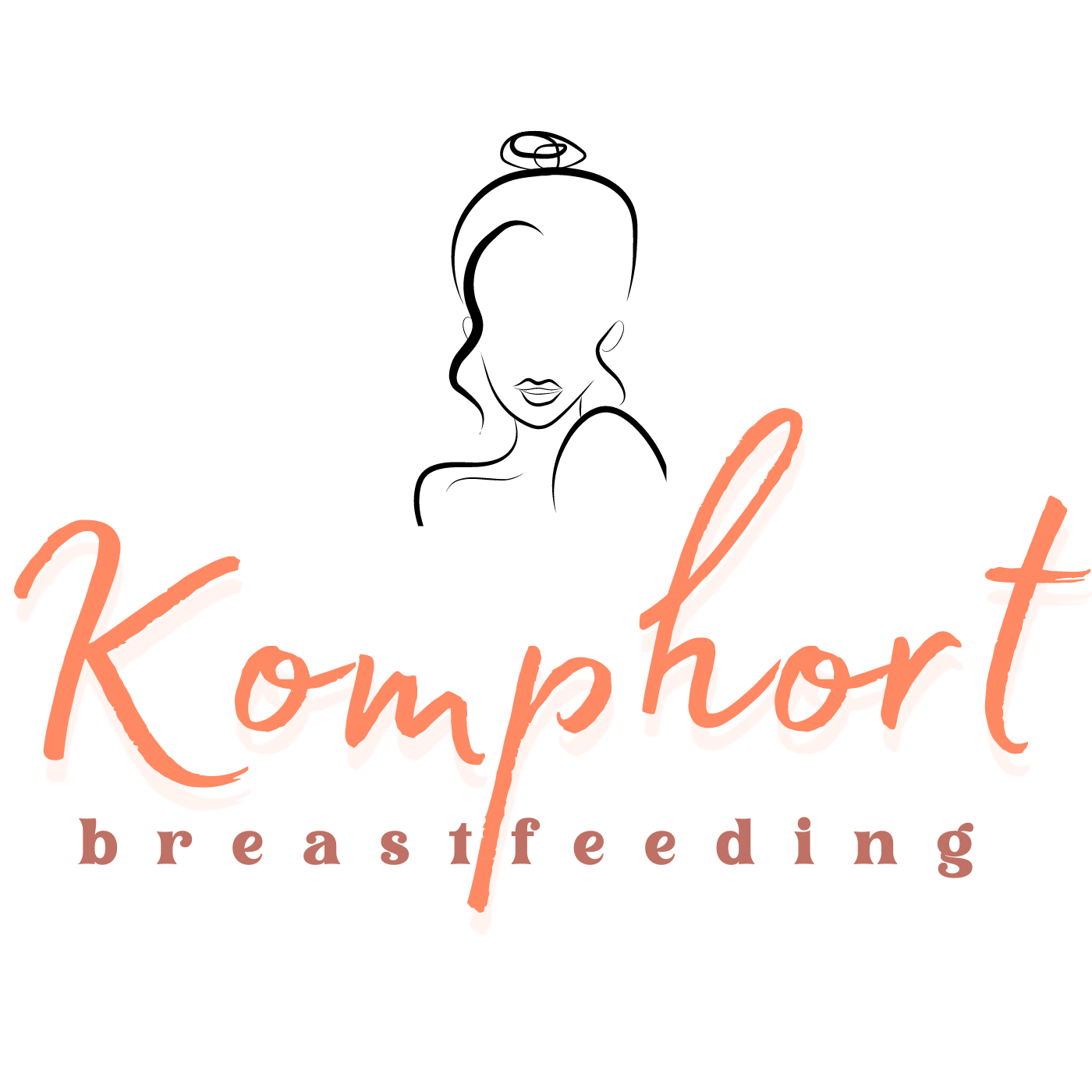Every new parent hopes for a smooth breastfeeding journey, but sometimes concerns about low breast milk supply can arise. If you notice signs such as your baby not gaining enough weight, fewer wet diapers, or your breasts feeling less full, it may be time to consider breast milk increase tips. Recognizing these early indicators ensures you and your baby get the support you need.

By understanding these signs of low supply and following helpful tips to increase breast milk, you can take proactive steps to boost your milk production. Remember, you’re not alone—Komphort Breastfeeding is here to guide you through every hormonal and emotional bump along the way.
Breast Milk Increase Tips: Common Indicators of Low Milk Production
If you’re concerned about low breast milk supply, there are common indicators that suggest low milk production. Your baby may not be gaining weight as expected, or seems unsatisfied even after frequent feedings.

There’s also the potential of insufficient milk production if you’re unable to feel that your breasts are softening after nursing. Occasionally, low supply might present itself if your baby is producing fewer wet diapers. Recognizing these signs is the first step in addressing low milk production and ensuring your little one is fully nourished with all they need.
Breast Milk Increase Tips: When to Consult a Lactation Specialist
Sometimes, despite your best efforts, you might feel your supply isn’t meeting your baby’s needs. That’s when it’s time to consult a lactation specialist. These knowledgeable professionals provide compassionate care, addressing your concerns and offering tailored solutions.

A lactation consultant can assess your situation, guiding you with personalized strategies to enhance your milk supply. Remember, seeking help from a lactation specialist doesn’t mean you’re failing. At Komphort Breastfeeding, we’re dedicated to supporting mothers on their journey, ensuring you have the resources and services you need.
Understanding the Factors Affecting Milk Production
Understanding the factors affecting milk production is key for women aiming to increase their breast milk supply. Many new mothers encounter this challenge, but knowing how physical and emotional factors influence milk production can make a big difference.

Hormonal changes, stress, and inadequate nutrition are just a few factors that can impact milk supply. At Komphort Breastfeeding, we’re devoted to helping women understand these factors better, so they can take proactive steps to increase their milk production and ensure a nourishing experience for their little ones.
Physical and Emotional Factors
It’s crucial for women to understand that both physical and emotional health play significant roles in breast milk supply. Stress can negatively impact milk production, so finding ways to relax is important. Physical factors like dehydration, fatigue, and diet also influence supply.

Breastfeeding is a journey, and balancing your health, both physical and emotional, can make a big difference. By focusing on these areas, women can better support their body’s natural ability to produce milk, ultimately fostering a fulfilling breastfeeding experience.
How Hormones Influence Milk Production
Hormones play a crucial role in breast milk production, as they regulate and influence the breastfeeding process from start to finish. Key hormones like prolactin and oxytocin significantly impact milk production, helping your breasts produce and release milk effectively.

During pregnancy, these hormones increase to prepare your body for breastfeeding, setting the stage for successful milk supply. It’s essential to understand how hormones influence this vital process so you can work with your body to support optimal milk production and enjoy a rewarding breastfeeding journey.
Breast Milk Increase Tips: Strategies to Increase Breast Milk Supply
At Komphort Breastfeeding, we know how important it is for new moms to find effective strategies to increase their breast milk supply. Sometimes, even with the best intentions, breast milk supply may feel a bit low. But don’t worry!

There are plenty of strategies to help you increase supply, from increasing the frequency of breastfeeding sessions to trying out proven supply-boosting techniques. By focusing on strategies tailored to your needs, you can help increase your breast milk supply, ensuring your little one gets all the nourishment they need.
The Benefits of Breastfeeding More Often
Breastfeeding more often can naturally boost your milk supply, helping ensure your baby is getting all the nourishment they need. When you breastfeed frequently, it signals your body to increase milk production, which can be incredibly beneficial, especially if you’re concerned about low supply.

Regular feeding times also strengthen the bond between you and your baby, offering both comfort and essential nutrition. Embracing this approach not only supports better milk flow but also tailors to your baby’s ever-changing breast milk requirements.
Practical Tips to Increase Milk Production Naturally
Looking to boost your milk supply naturally? You’ve come to the right place! At Komphort Breastfeeding, we’ve gathered practical tips to increase milk production effortlessly. Start by ensuring frequent breastfeeding sessions, which can signal your body to ramp up milk production.

Staying hydrated and enjoying nutritious meals also plays a critical role. Don’t forget the power of skin-to-skin contact; it’s an excellent way to communicate your milk supply needs. These natural tips not only increase milk but enhance your breastfeeding journey’s overall joy!
Read: Establishing Your Milk Supply: A Natural Symphony of Mother and Baby
Nutritional and Lifestyle Adjustments to Increase Breast Milk
At Komphort Breastfeeding, we know nutritional and lifestyle adjustments can play a crucial role in enhancing your breastfeeding journey. Focusing on nutritional health by consuming a balanced diet rich in essential nutrients can significantly support lactation. Remember, every bite counts towards improved milk supply.

Incorporate lifestyle adjustments like rest, hydration, and gentle exercise to boost both physical and emotional health. Adopting these practices not only enhances lactation but also contributes positively to your overall well-being. Prioritizing these changes can transform your breastfeeding experience while nurturing your baby’s health.
Effective Breast Massage Techniques
Need to boost your milk supply? Look no further because effective breast massage techniques can work wonders! By incorporating specific massage techniques into your routine, you may increase milk production and help your body release milk more efficiently.

It’s important to gently massage your breasts in circular motions, starting from the outside and working towards the nipple. This helps in stimulating the glands and ducts, potentially enhancing your milk supply. Give these massage techniques a try, and watch your confidence soar as you feed your little one.
The Importance of a Supportive Environment
A supportive environment is crucial for breastfeeding mothers, offering the essential care and support they need. Whether you’re dealing with a low breast milk supply or navigating the early stages of motherhood, a nurturing environment can make all the difference.

From encouraging partners to understanding family members, building a circle of support enables mothers to focus on what’s important—caring for themselves and their babies. At Komphort Breastfeeding, we emphasize creating this environment to boost a mother’s confidence, ensuring baby receives the best possible care.
Building a Support Network for New Mothers
Building a support network for new mothers is essential in navigating the challenges of breastfeeding, especially when dealing with low breast milk supply. Having a supportive network not only provides emotional care but also offers practical tips to help increase supply.

Whether it’s connecting with other mothers, consulting lactation specialists, or joining online groups, support is key. Surrounding yourself with people who understand and care about your journey can make a significant difference in your breastfeeding experience. Remember, you’re not alone in this motherhood adventure!
Relaxation Techniques to Reduce Stress and Increase Supply
Feeling a bit stressed? It’s totally normal, but stress can affect your milk supply. At Komphort Breastfeeding, we’re here with relaxation techniques to help you out. Try deep breathing or mindfulness exercises to reduce stress levels and increase milk supply.

Visualization, yoga, or even a little massage can work wonders for your health and boost your supply. Remember, a relaxed mom often means a happier baby. It’s all about creating that calm space to nurture yourself, which in turn, supports your breastfeeding health and journey.
Supplemental Feeding Options for Your Baby
When it comes to ensuring your baby gets enough nourishment, sometimes supplemental feeding is beneficial. Options like formula can be a great addition without compromising the benefits of breast milk. If you’re considering formula, it’s essential to understand how it integrates with your breastfeeding routine.

It’s not uncommon for new mothers to explore supplemental feeding when facing challenges with breast milk supply. Knowing your baby’s needs and maintaining balance between breast milk and formula ensures they receive the best nutrition. Remember, each mother-baby duo is unique, and finding what works best is key.
Choosing the Right Formula to Complement Breast Milk
Even when nourishing your baby with precious breast milk, there are times you might consider a formula to complement their feeding routine.

It’s essential to choose a formula that’s gentle and compatible with your baby’s needs, providing the necessary nutrients they require while still emphasizing breast milk as their primary nutrition source. When selecting a formula, ensure it complements breastfeeding efforts, supporting both you and your baby in a balanced feeding journey with the right mix of breast milk and supplemental formula.
A New Mom’s Guide to: Boosting Milk Supply
Wondering how to boost your milk supply and ensure your baby is getting enough? A New Mom’s Guide to: Boosting Milk Supply is your step-by-step resource for breastfeeding success. Learn how milk production works, proven strategies to increase supply, and essential tips on feeding cues and intake tracking. Say goodbye to second-guessing and gain the confidence to nourish your baby with ease.

📖 Grab your copy today and take control of your breastfeeding journey!
FAQs on Breastfeeding Challenges and Solutions

We provide expert advice on how to address these challenges effectively. From practical tips to emotional support, our FAQs cover a range of topics to help you navigate the early days of breastfeeding with confidence. Find the solutions you need to ensure your breastfeeding journey is a success.
1. How do I identify a proper latch?
A proper latch is essential for effective milk transfer and to prevent nipple pain. Signs of a good latch include:
- Baby’s mouth is wide open with lips flanged outward.
- Baby’s chin touches the breast.
- You hear swallowing sounds.
- Minimal pain or discomfort for the mother. If you experience pain, a lactation consultant can help correct positioning.
2. What can I do about sore nipples?
Sore nipples often indicate an improper latch or skin irritation. To manage soreness:
- Adjust baby’s latch to ensure a deep attachment.
- Apply lanolin cream or breast milk to soothe irritation.
- Air dry nipples after feeding.
- Use breast shells if necessary to reduce friction.
3. How can I address concerns about low milk supply?
Many mothers worry about low milk supply, but frequent nursing and monitoring baby’s weight gain are key indicators of adequate intake. To maintain supply:
- Nurse on demand, at least 8-12 times per day.
- Ensure baby is effectively removing milk from the breast.
- Avoid supplementing unless medically necessary.
- Stay hydrated and maintain a nutritious diet.
4. What should I do if I experience engorgement?
Engorgement occurs when the breasts become overly full and uncomfortable. To relieve engorgement:
- Nurse frequently to encourage milk flow.
- Hand express or pump a small amount if needed.
- Apply warm compresses before feeding and cold compresses afterward.
- Gently massage the breast while nursing.
5. How do I manage plugged ducts?
Plugged ducts result from incomplete milk removal, causing a tender lump in the breast. To resolve this:
- Nurse frequently on the affected side.
- Apply warm compresses before feedings.
- Massage the area gently while feeding.
- Ensure varied nursing positions to help drain all areas of the breast.
6. What is a nursing strike, and how do I handle it?
A nursing strike is when a baby suddenly refuses to breastfeed. This can be caused by discomfort, illness, or environmental changes. To encourage breastfeeding:
- Offer the breast when baby is calm and sleepy.
- Try skin-to-skin contact.
- Change nursing positions.
- Avoid force-feeding and be patient while baby readjusts.
7. How does tongue tie affect breastfeeding?
A tongue tie occurs when a piece of tissue under the tongue restricts movement, making latching difficult. Signs include:
- Difficulty sustaining a latch.
- Clicking sounds while nursing.
- Poor weight gain.
- Maternal nipple pain due to shallow latch. A healthcare provider or lactation consultant can assess and recommend treatment options.
8. When should I seek professional help?
Consider reaching out to a lactation consultant or healthcare professional if you experience:
- Significant nipple pain or cracking.
- Concerns about baby’s weight gain or feeding patterns.
- Repeated plugged ducts or mastitis.
- Baby showing difficulty latching consistently.
- Any ongoing breastfeeding challenges that cause discomfort or concern.
Addressing Common Concerns for New Mothers
Navigating the early days of motherhood can feel overwhelming, especially when breastfeeding isn’t as smooth as you’d hoped. Many mothers share concerns about whether their baby is getting enough milk at feeding times. Rest assured, you’re not alone. At Komphort Breastfeeding, we’ve got invaluable tips to help increase your milk supply naturally and ease your concerns. Embrace the journey with supportive resources and expert advice tailored to address the concerns many new mothers face while ensuring their baby thrives.
Read: Enhancing Breastmilk Production: Advice Every New Mom Should Follow
Conclusion
Motherhood is a journey filled with learning, patience, and growth. While concerns about breastfeeding are common, know that with the right support, guidance, and a little perseverance, you and your baby can thrive.

Trust your body, seek expert advice when needed, and surround yourself with a community that uplifts and encourages you. At Komphort Breastfeeding, we’re here to support you every step of the way, helping you navigate this beautiful, rewarding experience with confidence. More breast milk increase tips are on your way!
Searching for More Tips for New Moms?








